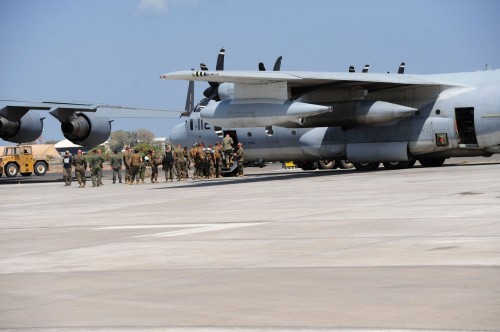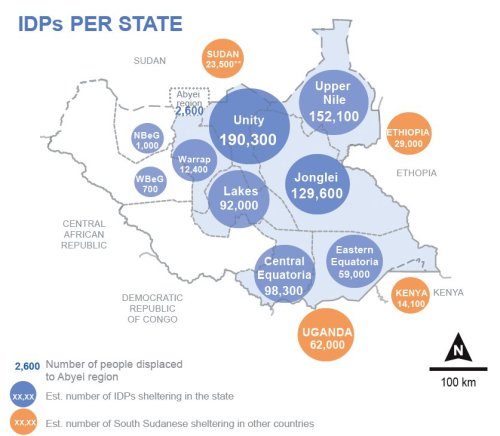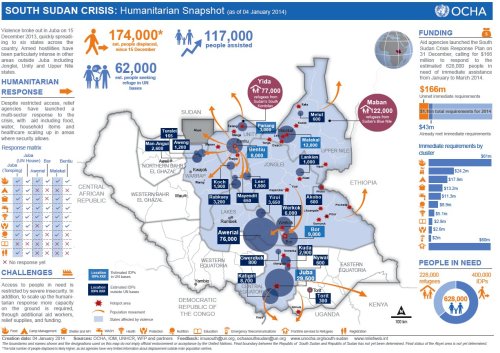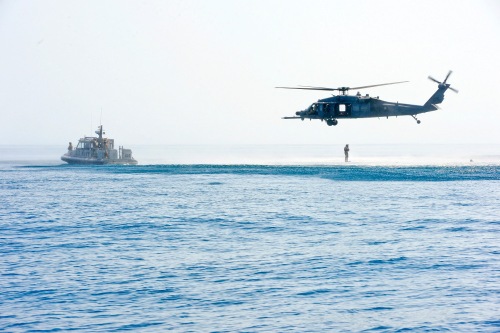Four CV-22B Ospreys, two MC-130P Hecrules, and a single KC-135R Stratotanker will arrive at Entebbe airport in Uganda by the end of the week. The entire task force has approximately one hundred and fifty personnel supporting it. This is the latest deployment in support of Operation Observant Compass, the US operation to support efforts to hunt down the elusive Lord’s Resistance Army and its leader, Joseph Kony. The LRA has terrorized central Africa for decades, looting and raping, as well as most notably kidnapping thousands of children over the years to serve as soldiers and sex slaves.
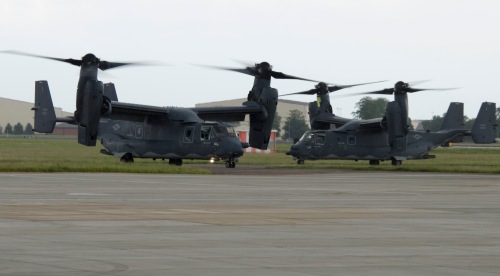
Two CV-22B Ospreys taxi to their new home on June 24, 2013, at RAF Mildenhall, England. The Ospreys, assigned to the 7th Special Operations Squadron, were the first of 10 slated to arrive as part of the expansion of the 352nd Special Operations Group.
The US has support efforts to end the LRA’s campaign of violence over the years, but until recently this was limited mostly to intelligence gathering, military aid, and training events. In October 2011, a small number of special operations forces deployed to Uganda to better coordinate efforts in that country, as well as in Central African Republic (CAR), the Democratic Republic of Congo (DRC), and South Sudan. The African Union’s Regional Task Force (AU-RTF) still leads the fight against the LRA, with the US firmly in a supporting role.
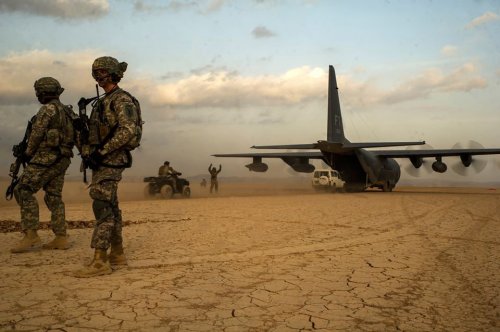
Soldiers of the 1st Battalion, 18th Infantry Regiment, assigned to the East Africa Response Force, provide security as pararescuemen of the 82d Expeditionary Rescue Squadron (ERQS) return to an HC-130 of the 81st ERQS during a training exercise on January 12th, 2014.
That support is significant, however. Spy planes flown by US forces and private contractors have searched for Kony and his men as part of Operation Tusker Sand and other efforts. They have also shuttled AU troops between a number of small airstrips in the region and airlifted them into battle. When the LRA moved its main base of operations into CAR, the US helped establish an intelligence fusion center there.
Instability in the region has caused the anti-LRA to wax and wane to some degree. The US military put the operation on hold for a period last year. Crises in CAR and South Sudan have also threaten to derail the campaign. The US military, however, says the latest deployment is not in any way related to those regional crises.
According to the Pentagon, the more significant problem has been that the aircraft available are limited in their capabilities and availability to take full advantage of the intelligence gathered. AU troops often arrive to reported LRA base camps after the rebels have already left. The CV-22Bs are faster than the existing aircraft and their deployment is designed to help the AU-RTF pounce on LRA fighters once they’ve been located before they can flee into the jungle. The MC-130Ps will be able to refuel the Ospreys to help extend their range and on-station time. The KC-135R will be able to refuel the MC-130Ps, again increasing their range and on-station time.
US Africa Command (AFRICOM) had sought the Ospreys months ago, but it appears the aircraft are few and far between. The Air Force did not request any more in its latest budget either. US Central Command (CENTCOM) is providing the aircraft for the latest deployment, in an arrangement that gives hints at a larger picture of US operations in the region. While the CV-22Bs are based in Djibouti in the AFRICOM area of responsibility, they are tasked to support CENTCOM, and it remains unclear what unit they report to. The focus of their operations is likely in Yemen on the other side of the Gulf of Aden. There is no information as to what their usual missions might entail.
This also means that the deployment will definitely be temporary. Yesterday, the Pentagon’s Press Secretary, Rear Admiral John Kirby, confirmed this by saying that he did not expect the new elements to remain in Uganda for long. However, there is the possibility that rotations from Djibouti to Uganda could become a more regular occurrence.
AFRICOM has had some experience with this recently. It is likely that the CV-22Bs involved in the aborted rescue attempt in South Sudan last December came from the same contingent in Djibouti as the aircraft going to Uganda now. Marines from Special Purpose Marine Air Ground Task Force – Crisis Response also forward deployed to Djibouti and then sent elements further on to Uganda at the beginning of this year, also in response to the crisis in South Sudan. Whatever happens, the Ospreys appear to be proving their worth and we are likely to see them used more and more in the near future, both in the Middle East and Africa.
You can also read about this in a piece I wrote for War is Boring.


